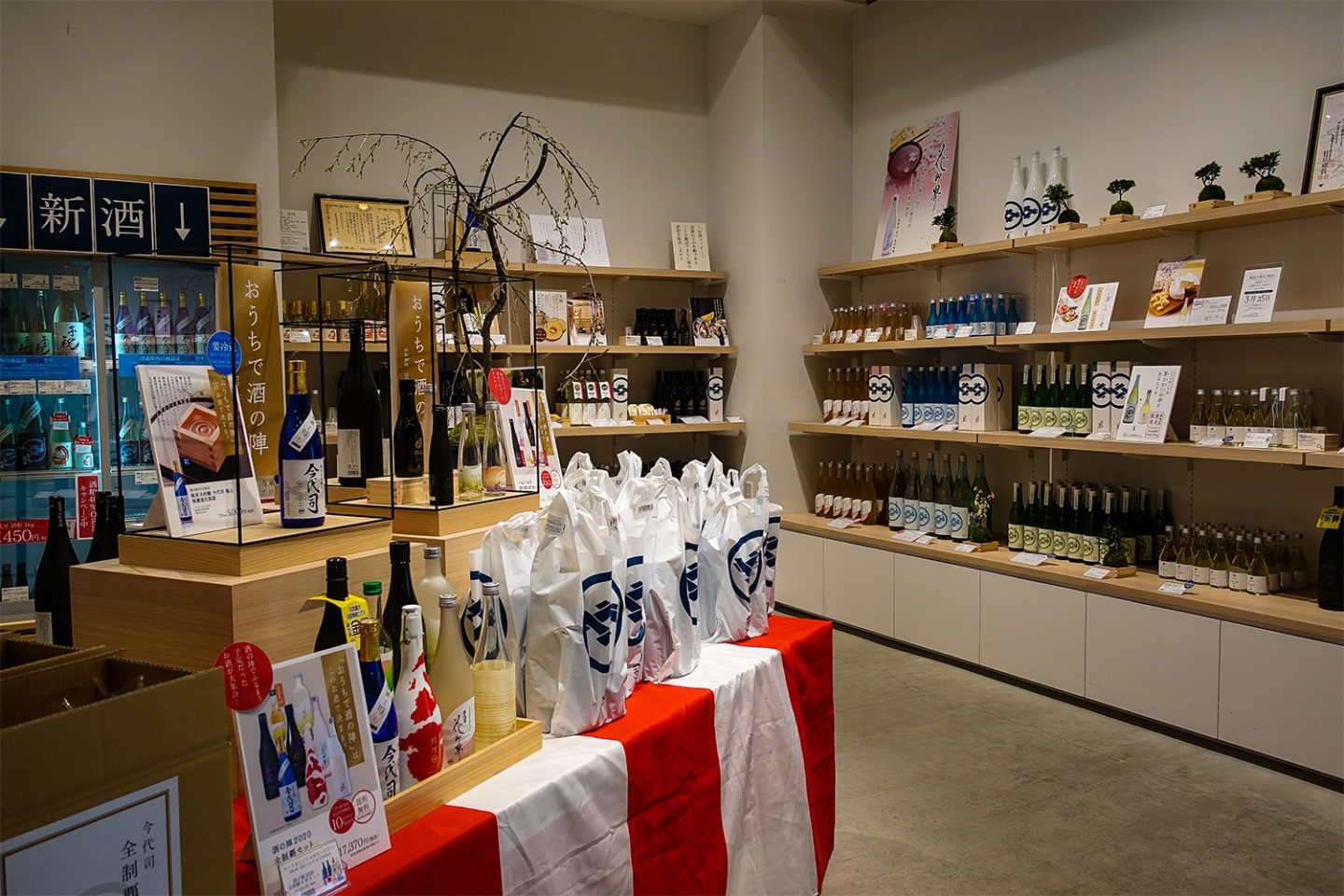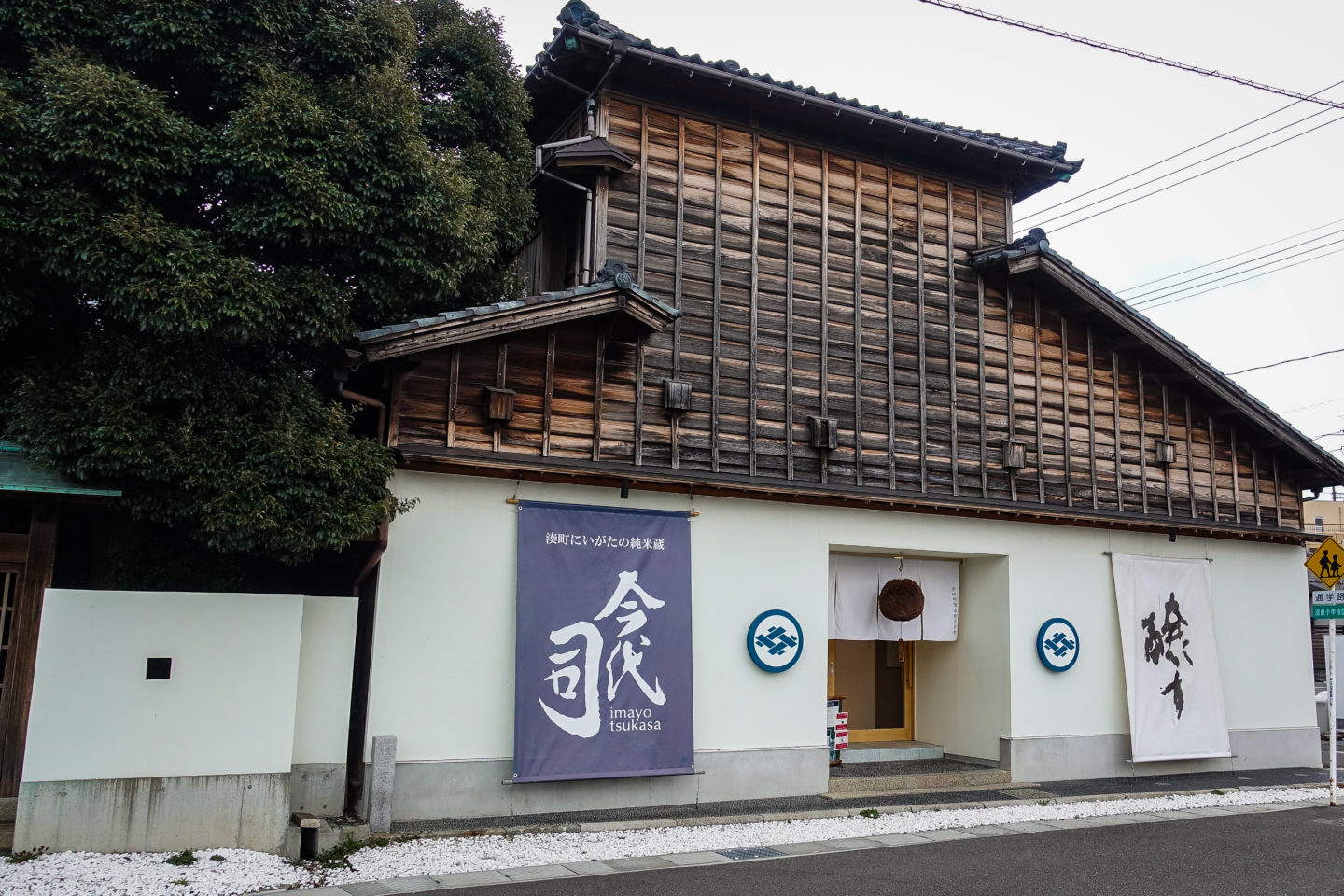
One of the coolest things we did during our short trip to Japan was visiting the Imayotsukasa Sake Brewery in Niigata. This was part of our day trip from Tokyo today (LINK).
Under normal circumstances, visitors get a free tour of the brewery and a sake tasting at the end. Unfortunately for us, the latter part was cancelled, thanks to Covid. We actually surprised the staff when we showed up because it was so empty, they were not expecting any tourists 😂 so to compensate for the lack of tasting, we were given a longer private tour with Kai, our guide.
Under normal circumstances, visitors get a free tour of the brewery and a sake tasting at the end. Unfortunately for us, the latter part was cancelled, thanks to Covid. We actually surprised the staff when we showed up because it was so empty, they were not expecting any tourists 😂 so to compensate for the lack of tasting, we were given a longer private tour with Kai, our guide.
Tour
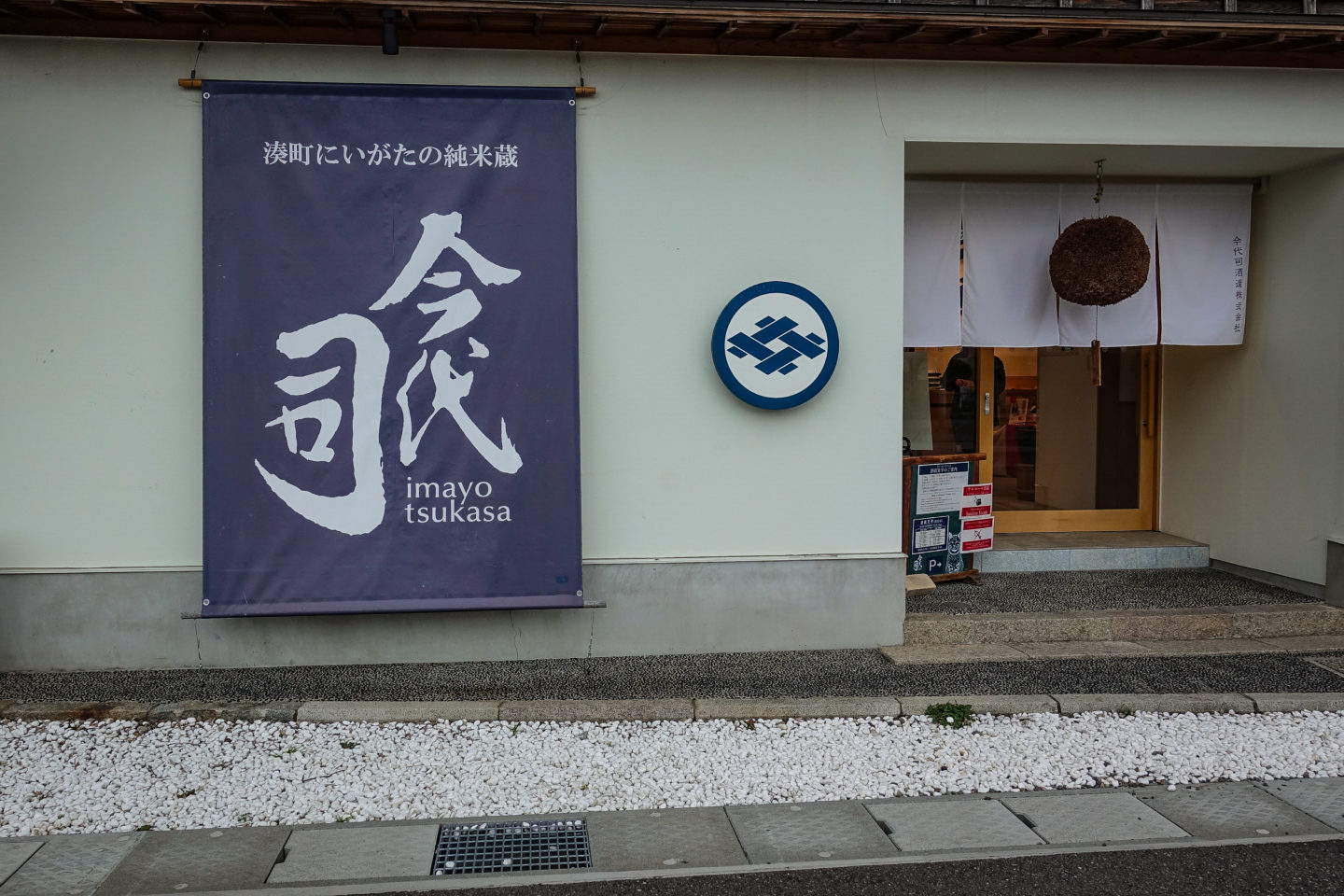
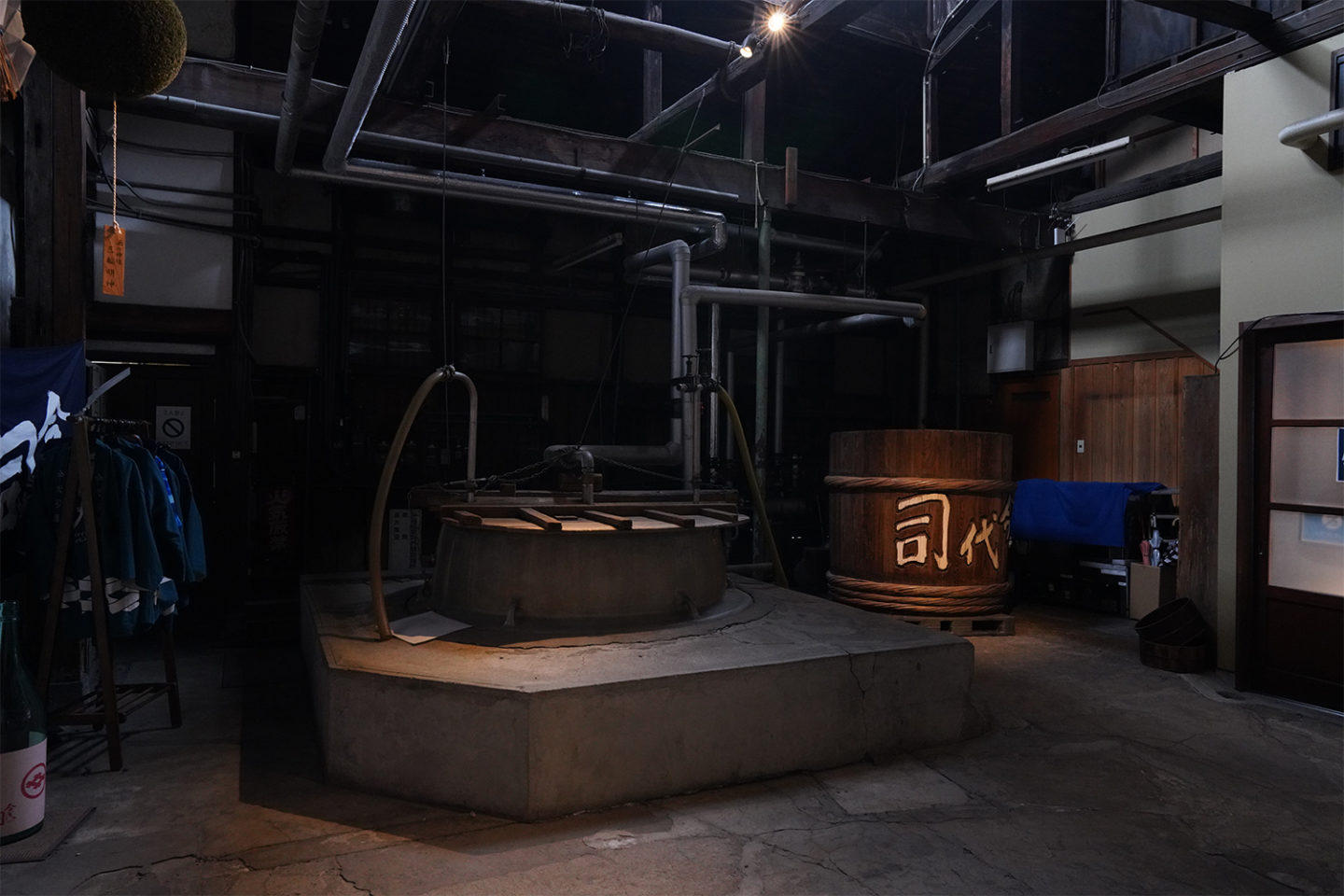
This brewery was established in 1767 and has been open since. It still uses traditional methods and instruments to produce sake, shipping it domestically and internationally to its vendors.
We were given wooden slippers for our tour. Once inside, we felt like we had transported back in time to the olden days of Japan. The walls were wooden and the floor was a mix of cracked cement and dirt. It was also quite cold in the brewery. There was a hollow smell in the air like the place was too ancient for our polluted-modern senses to comprehend. It was an intriguing experience.
We were given wooden slippers for our tour. Once inside, we felt like we had transported back in time to the olden days of Japan. The walls were wooden and the floor was a mix of cracked cement and dirt. It was also quite cold in the brewery. There was a hollow smell in the air like the place was too ancient for our polluted-modern senses to comprehend. It was an intriguing experience.
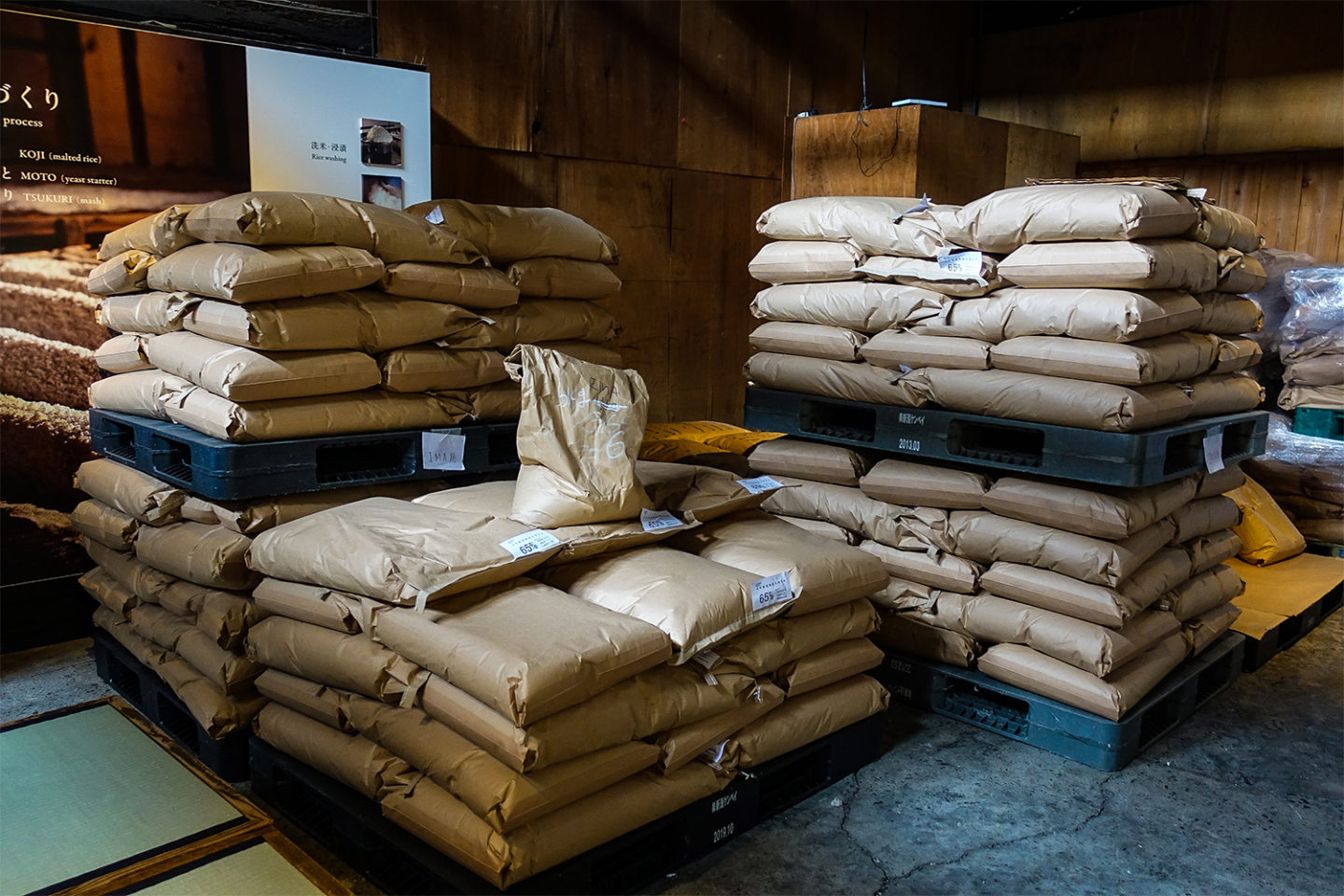

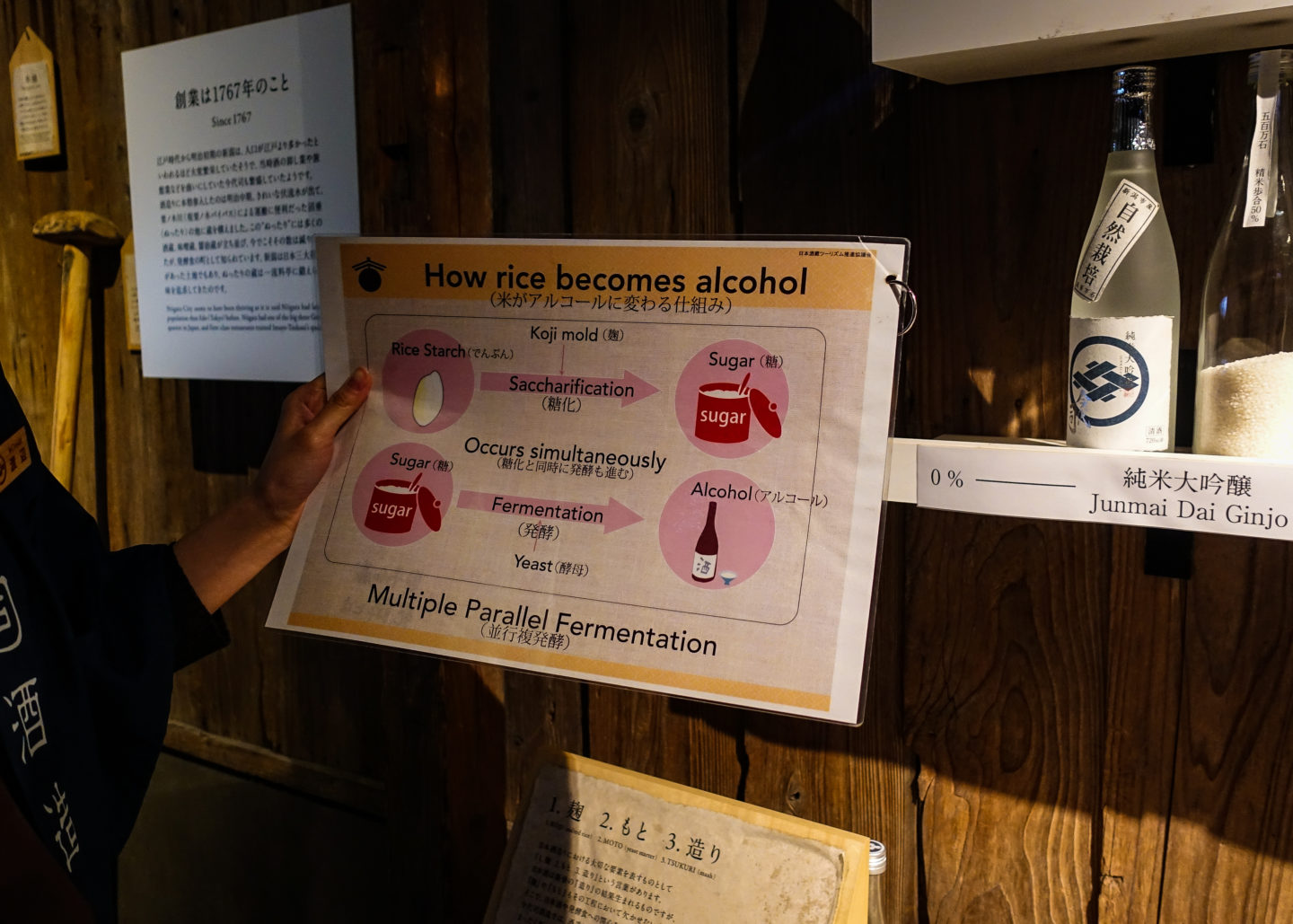
As we walked through the brewery, Kai explained in great detail the process of polishing rice to get the fruity aroma of sake.
Sake is brewed in a two step process. The first step is steaming the rice and adding an enzyme-secreting fungus called koji-kin. In the second step, yeast is added and this fermentation process takes about a month.
For simple understanding: the starch (rice) is converted to sugars which is then fermented into alcohol (sake). This process occurs in a single vat, distinguishing sake from other brewed alcohols, like beer.
Sake is brewed in a two step process. The first step is steaming the rice and adding an enzyme-secreting fungus called koji-kin. In the second step, yeast is added and this fermentation process takes about a month.
For simple understanding: the starch (rice) is converted to sugars which is then fermented into alcohol (sake). This process occurs in a single vat, distinguishing sake from other brewed alcohols, like beer.
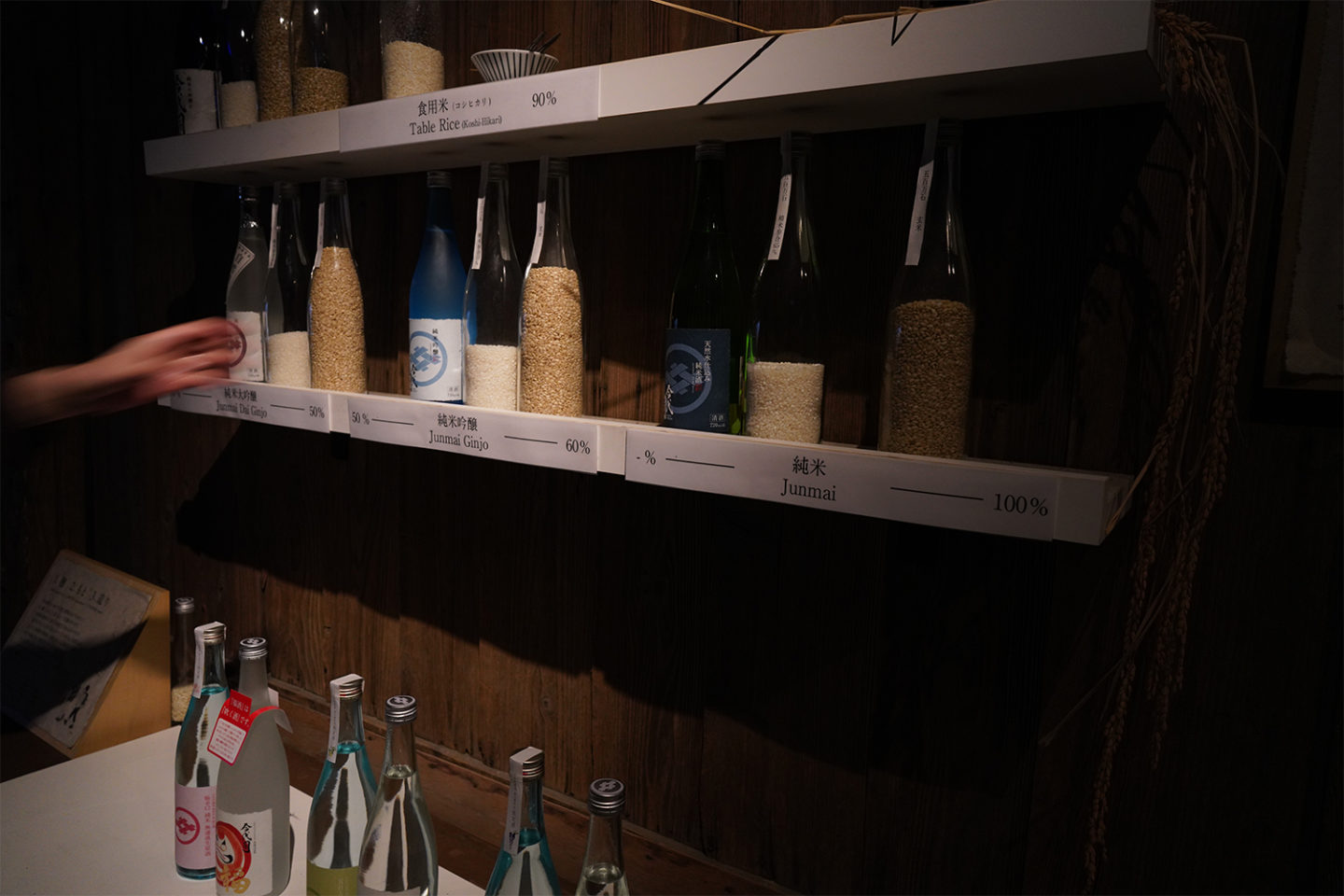
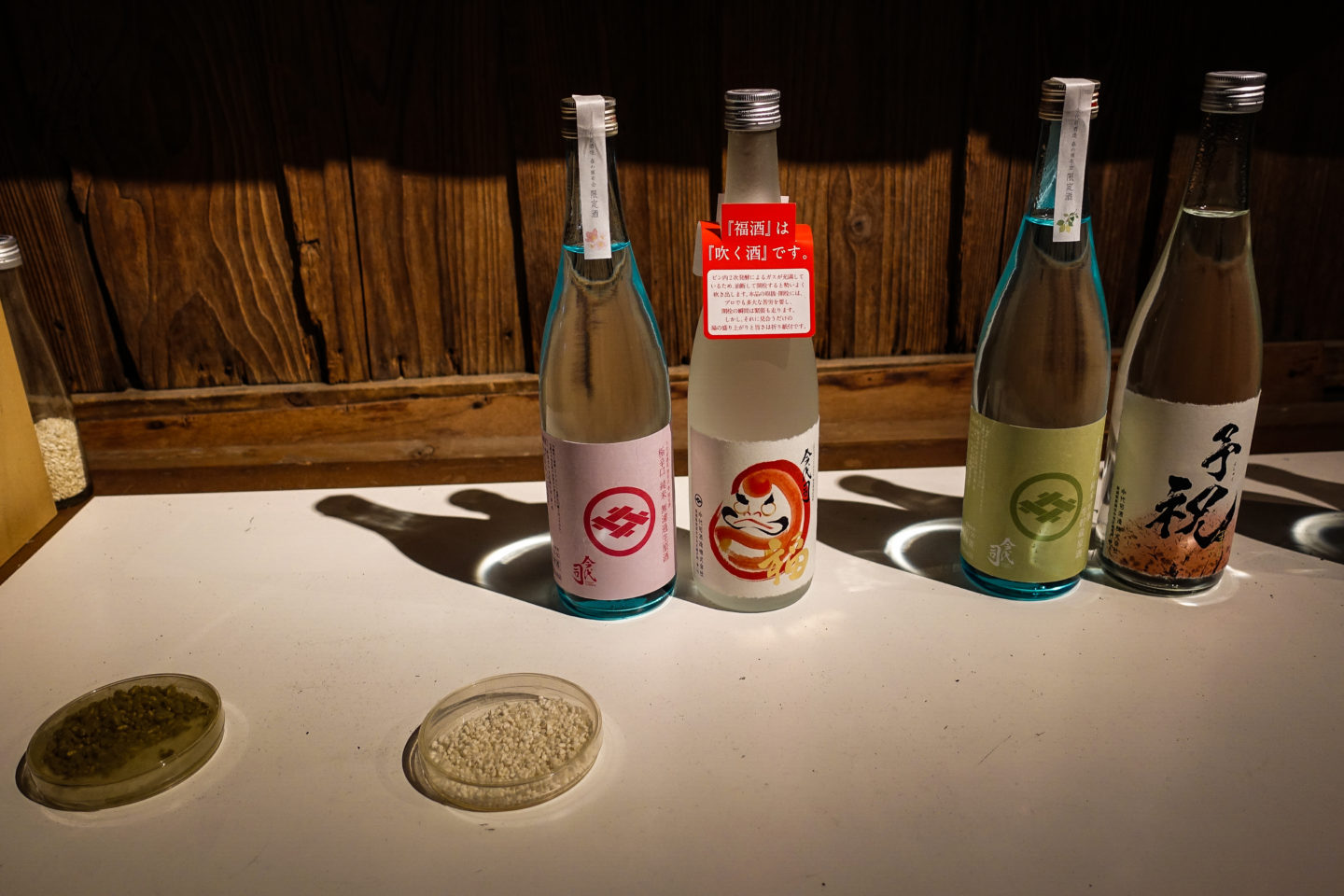
Sake is categorized into three grades: Junmai, Ginjo and Daiginjo, based on the polishing ratio of the rice. The higher the percentage, the purer the sake. Junmai is used to indicate pure sake without additional alcohol. Kai said this process requires more quantity of rice and a delicate hand-washing method, which explains why most Junmai is expensive.
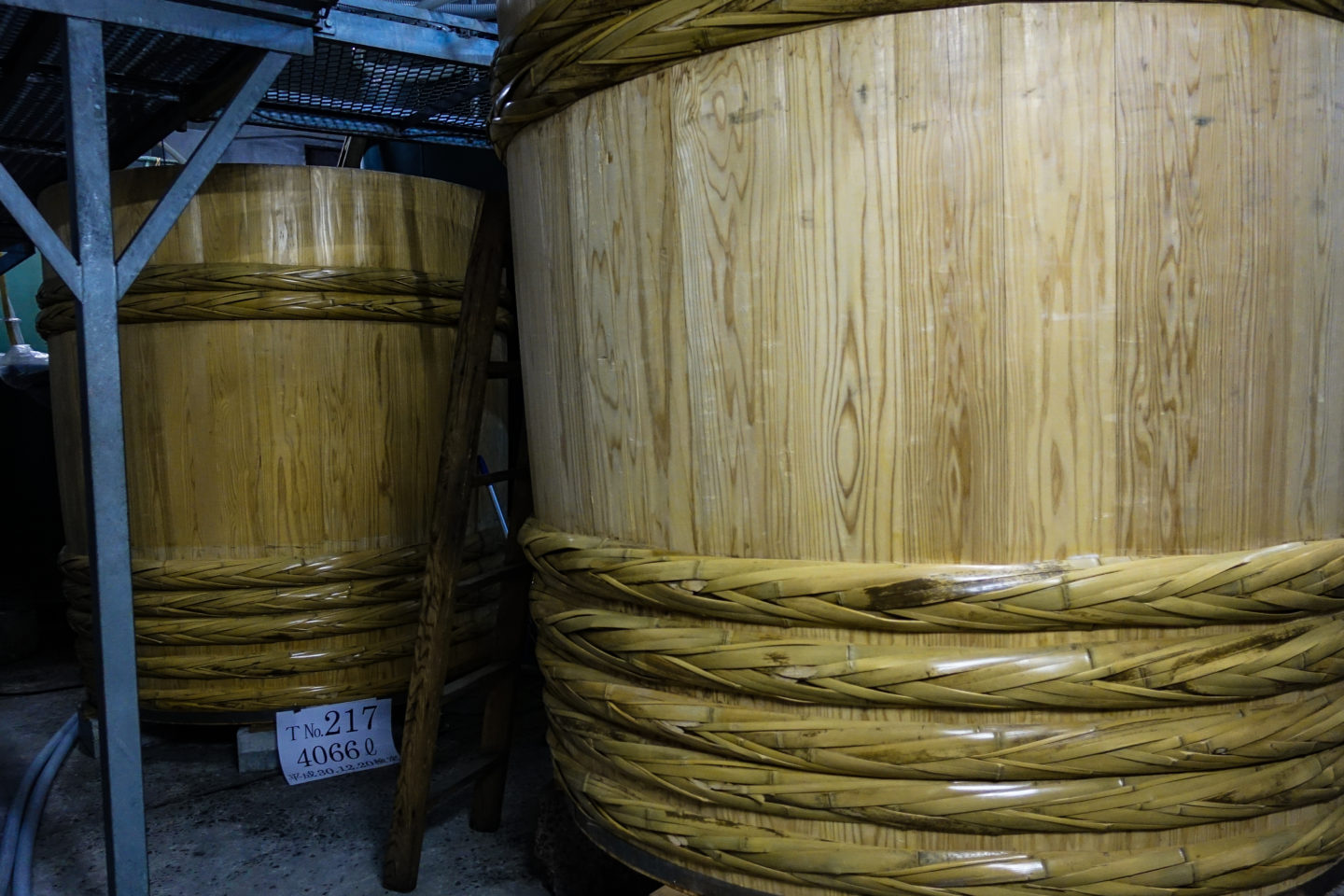
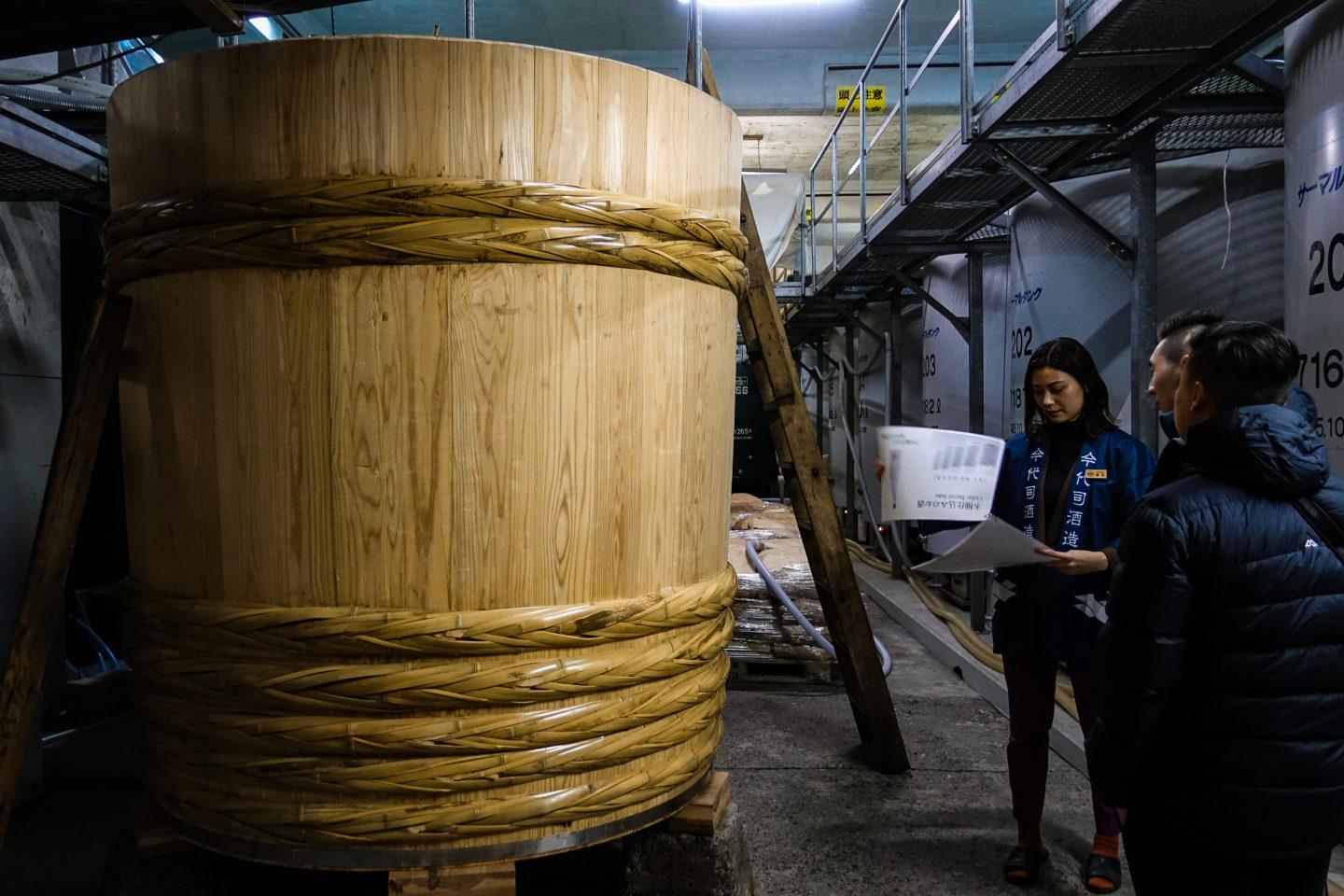
The fermenting rice are stored in these huge tanks. The grey ones are modern tanks with the capability to control the temperature. Most breweries will have this.
The wooden tanks are part of the traditional method of brewing sake. Workers would climb a ladder to manually stir the sake. People of the past were definitely more fit than today’s society 😂. Due to the outdated technique, there are only 20 out of 1400 sake breweries in Japan that own this machine. Kai said the taste is subtly better with the wooden tank but usually only sake experts can tell the difference.
The wooden tanks are part of the traditional method of brewing sake. Workers would climb a ladder to manually stir the sake. People of the past were definitely more fit than today’s society 😂. Due to the outdated technique, there are only 20 out of 1400 sake breweries in Japan that own this machine. Kai said the taste is subtly better with the wooden tank but usually only sake experts can tell the difference.
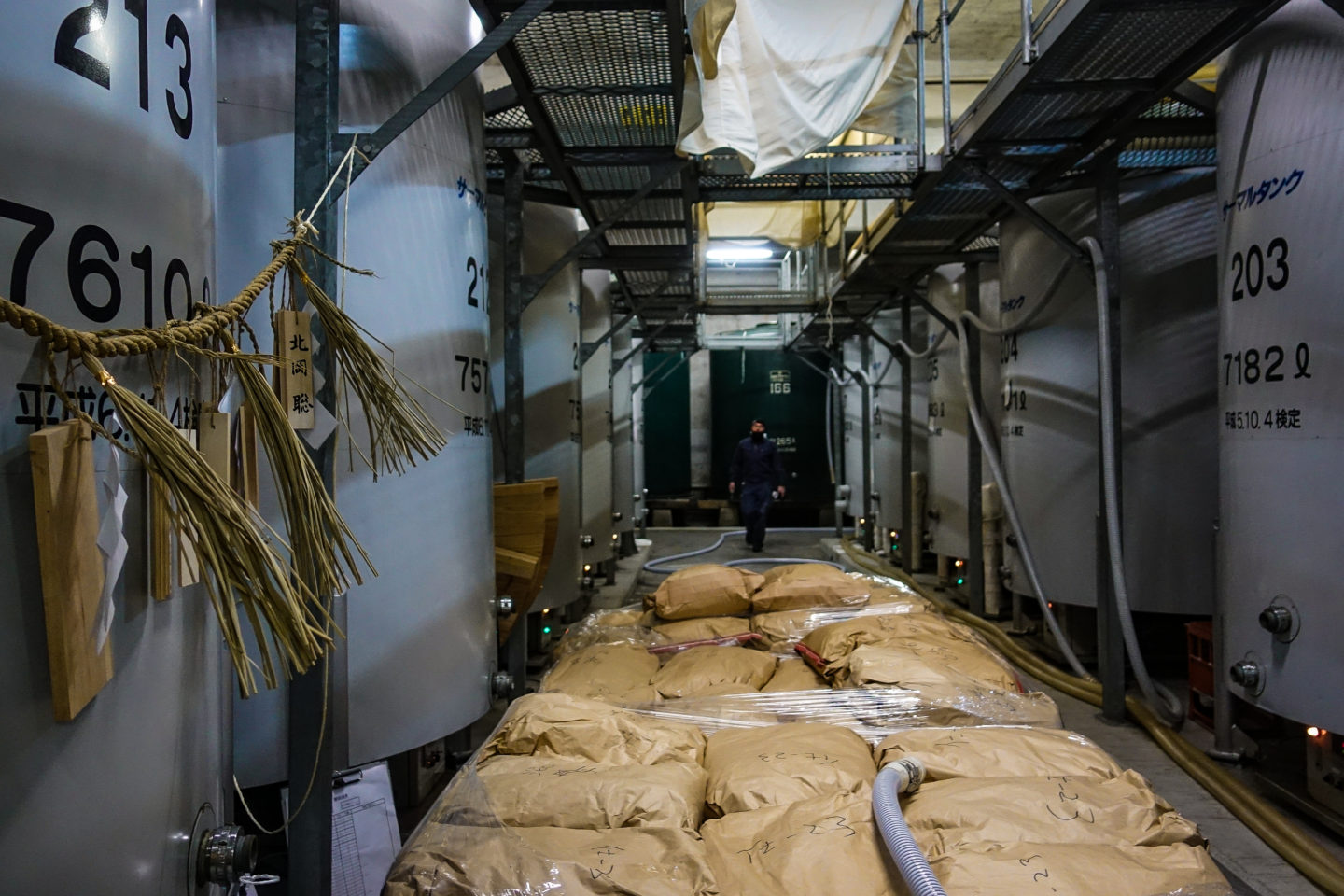
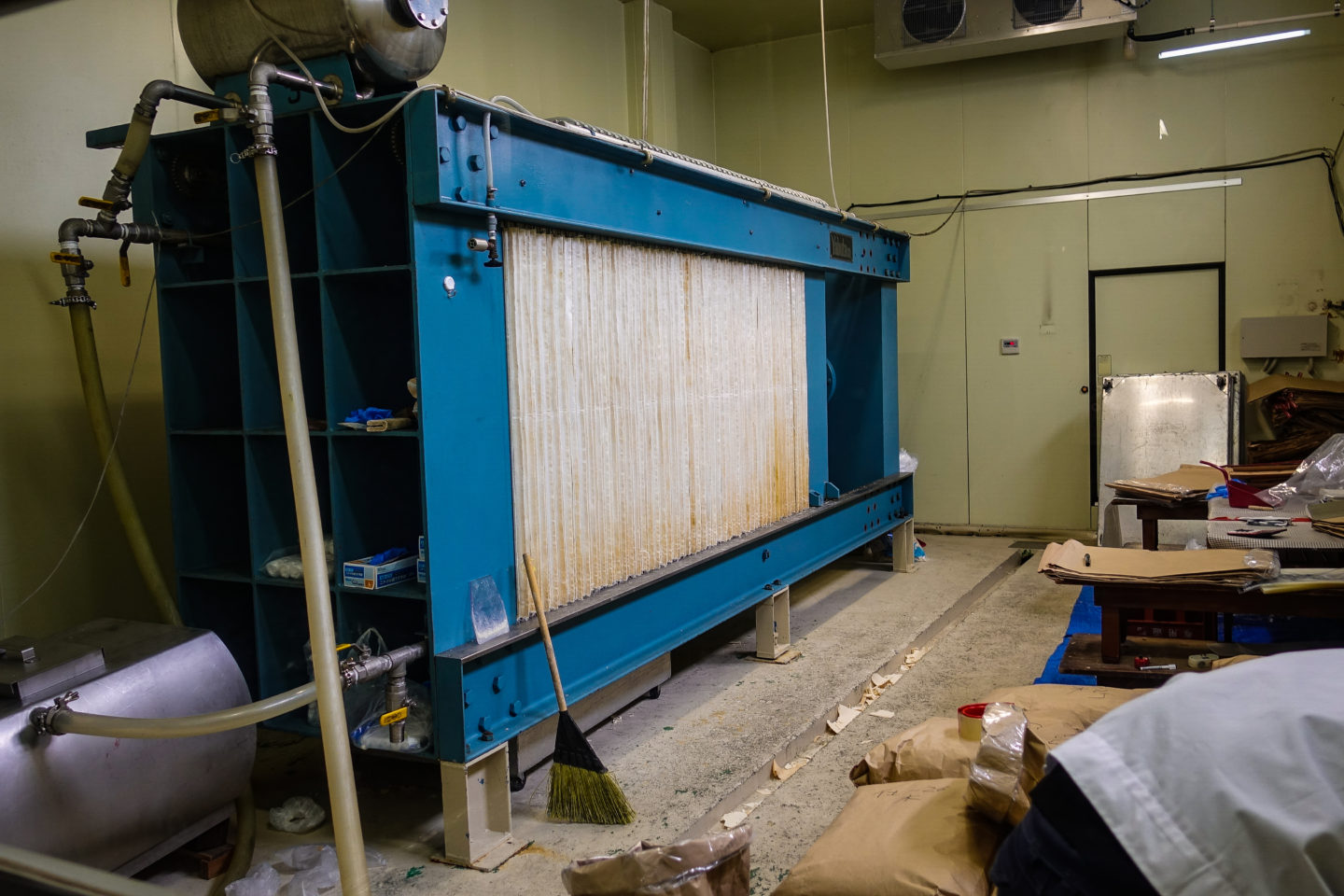
In this room, one worker was assigned to seperate the koji sheets (leftover pressed rice and koji) for other purposes, such as desserts, snacks and face masks. We got to smell a sample. It had a nice, strong odour with a hint of miso.
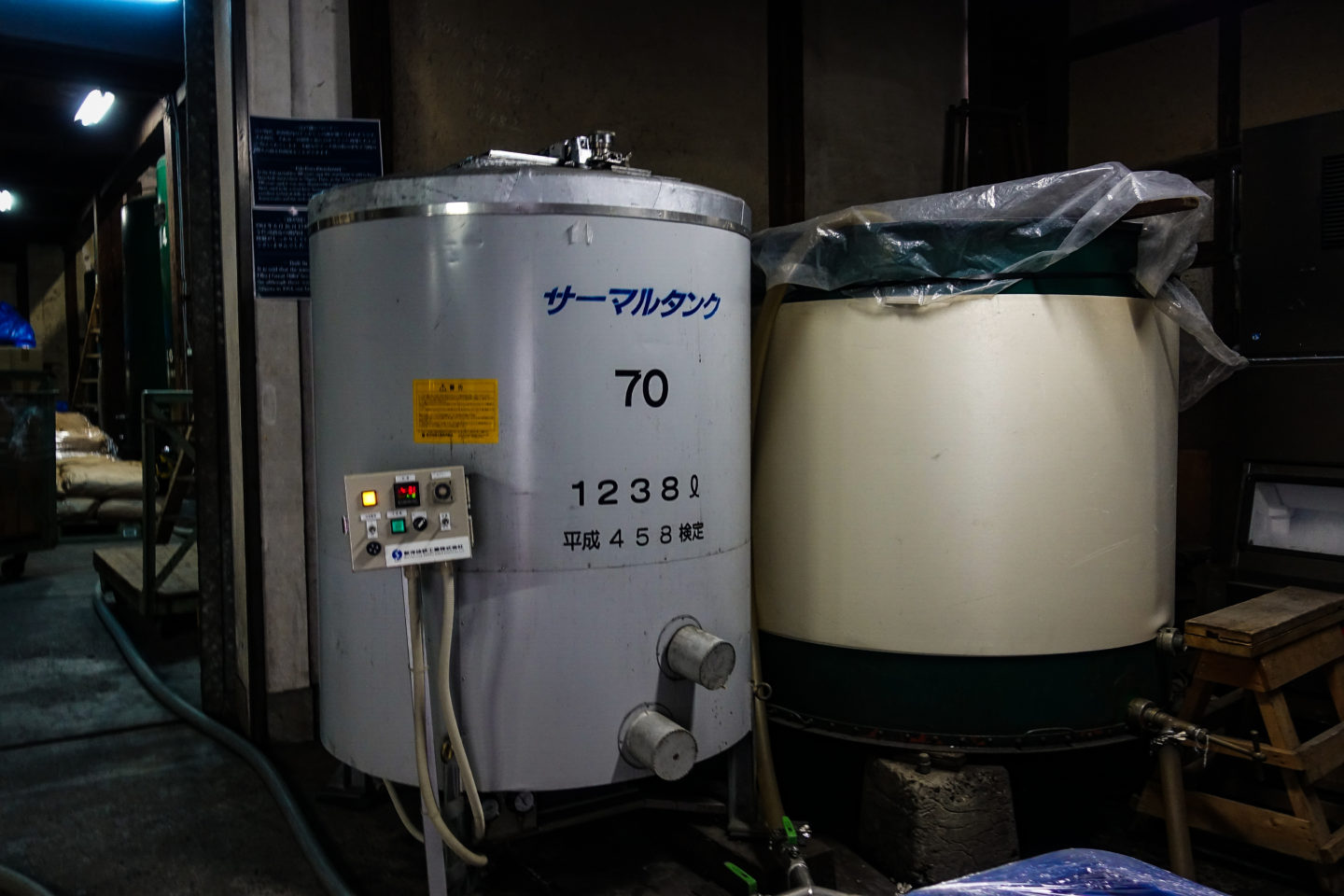
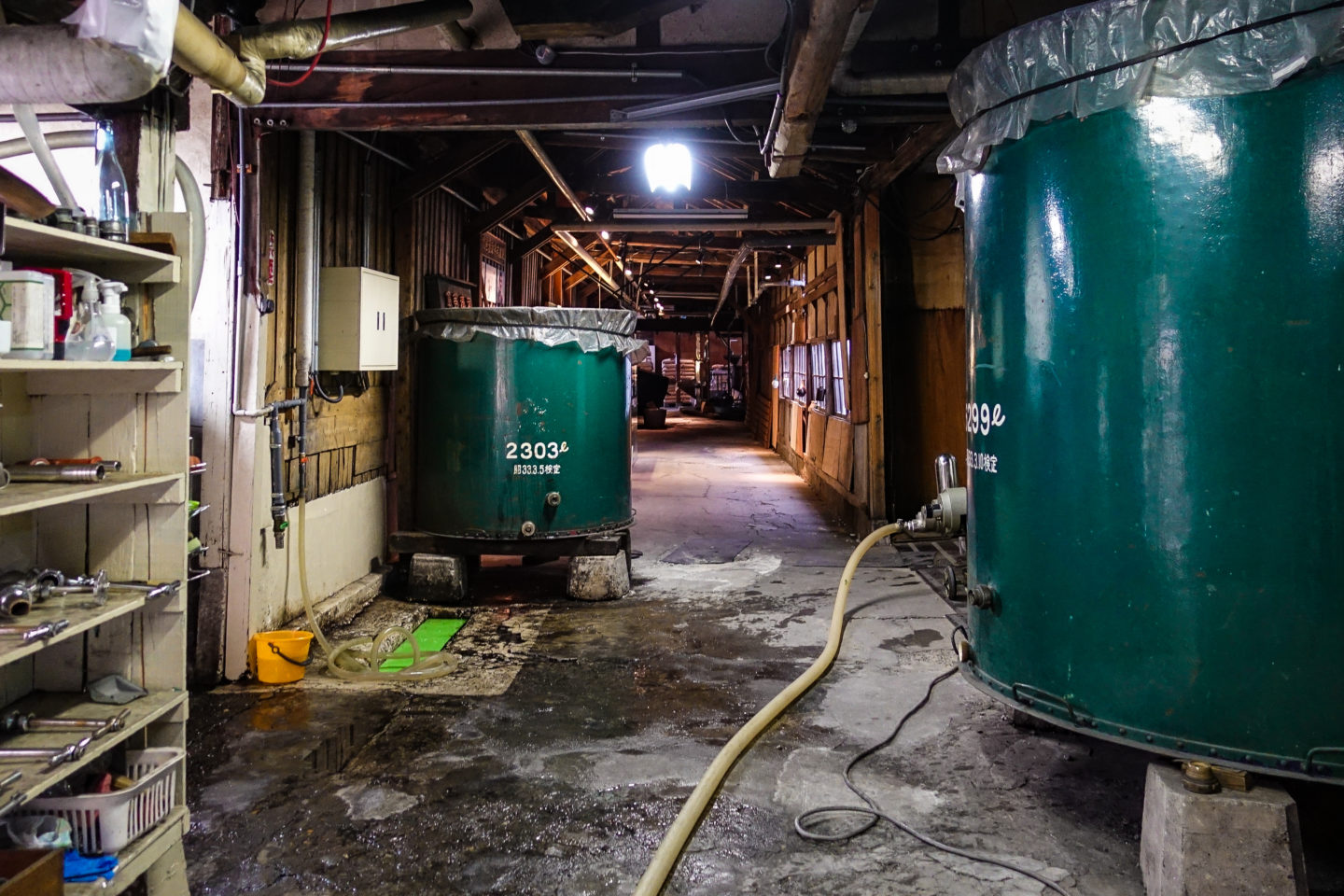
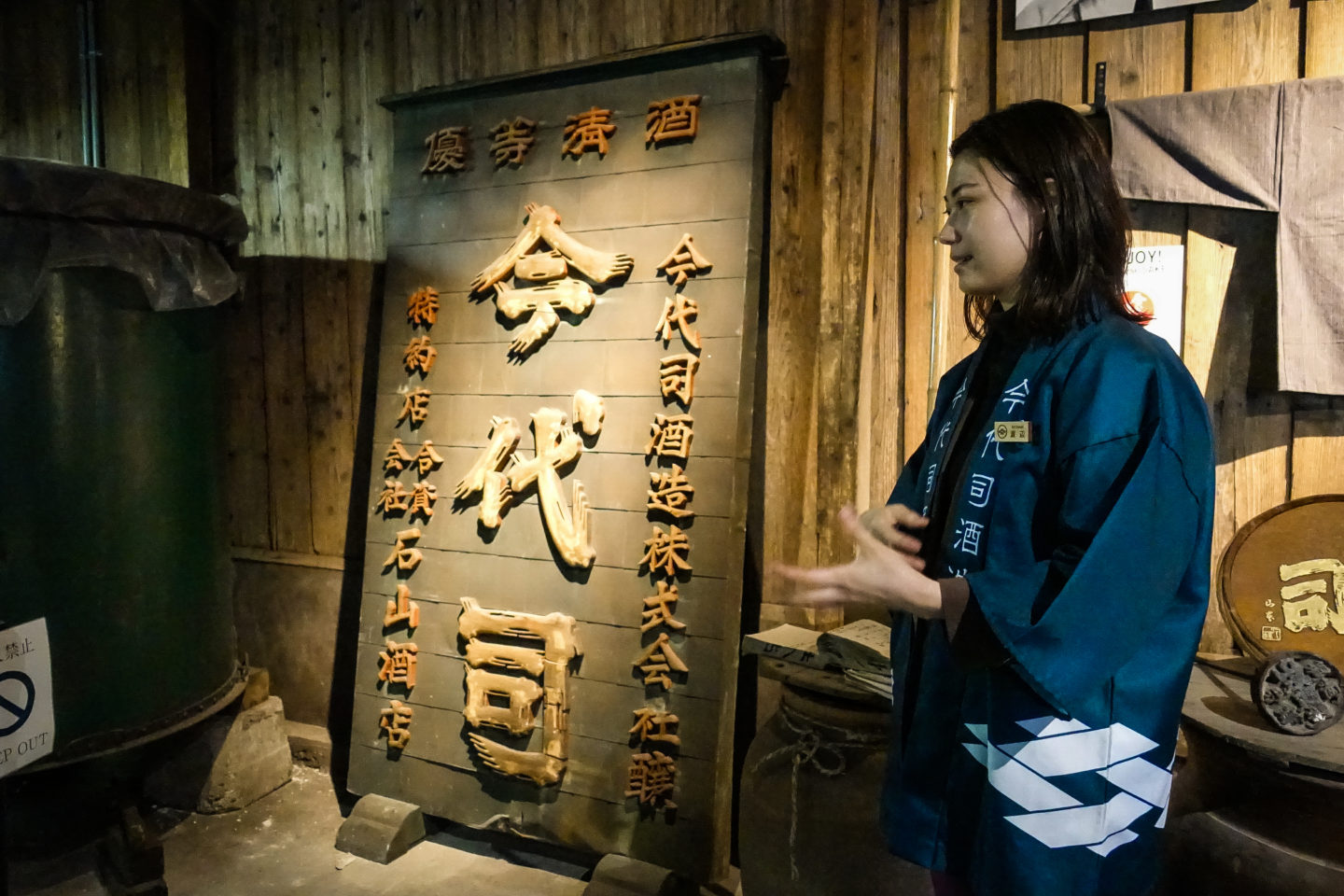
Kai was showing us the original wooden sign of the roof, used 250 years ago.
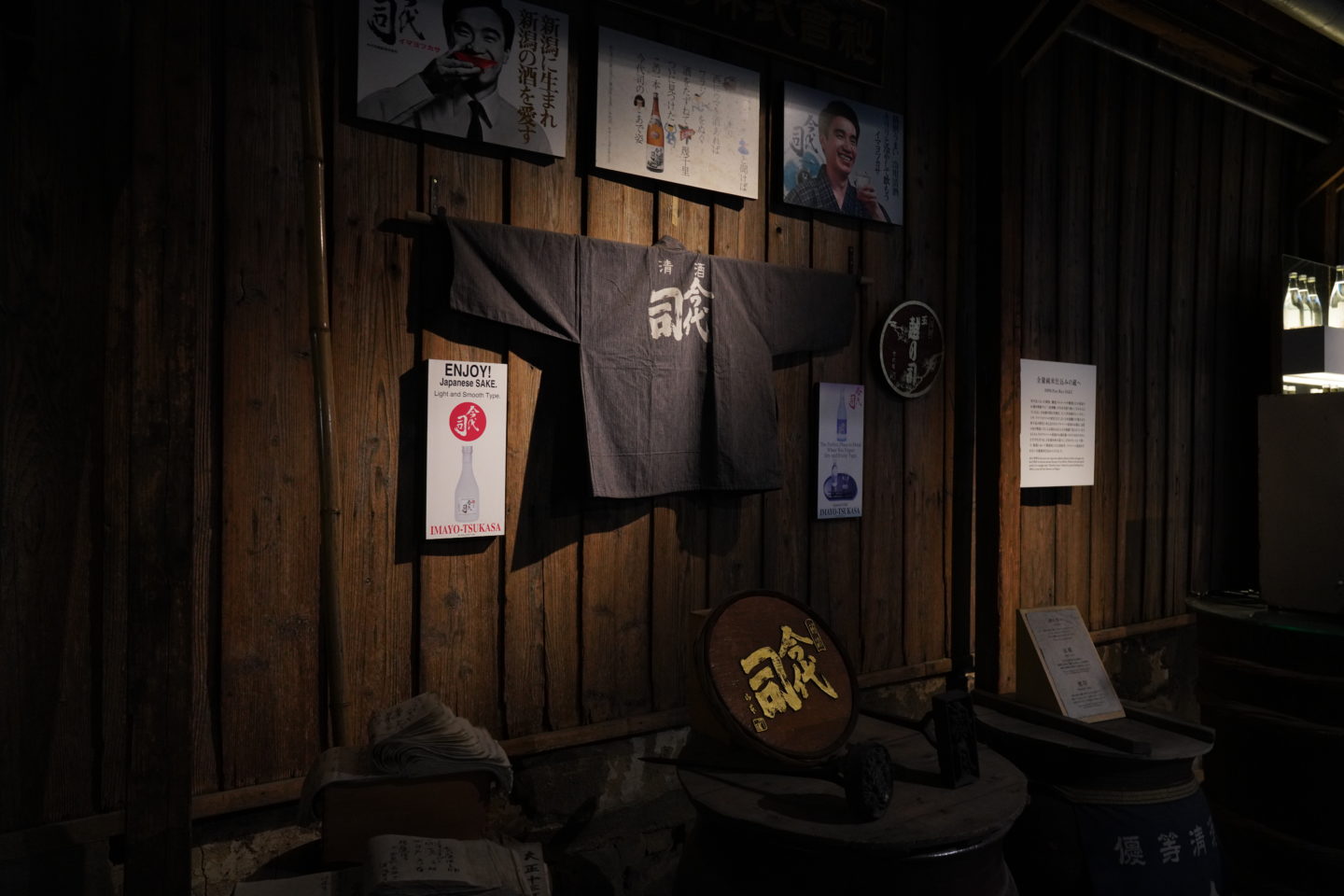
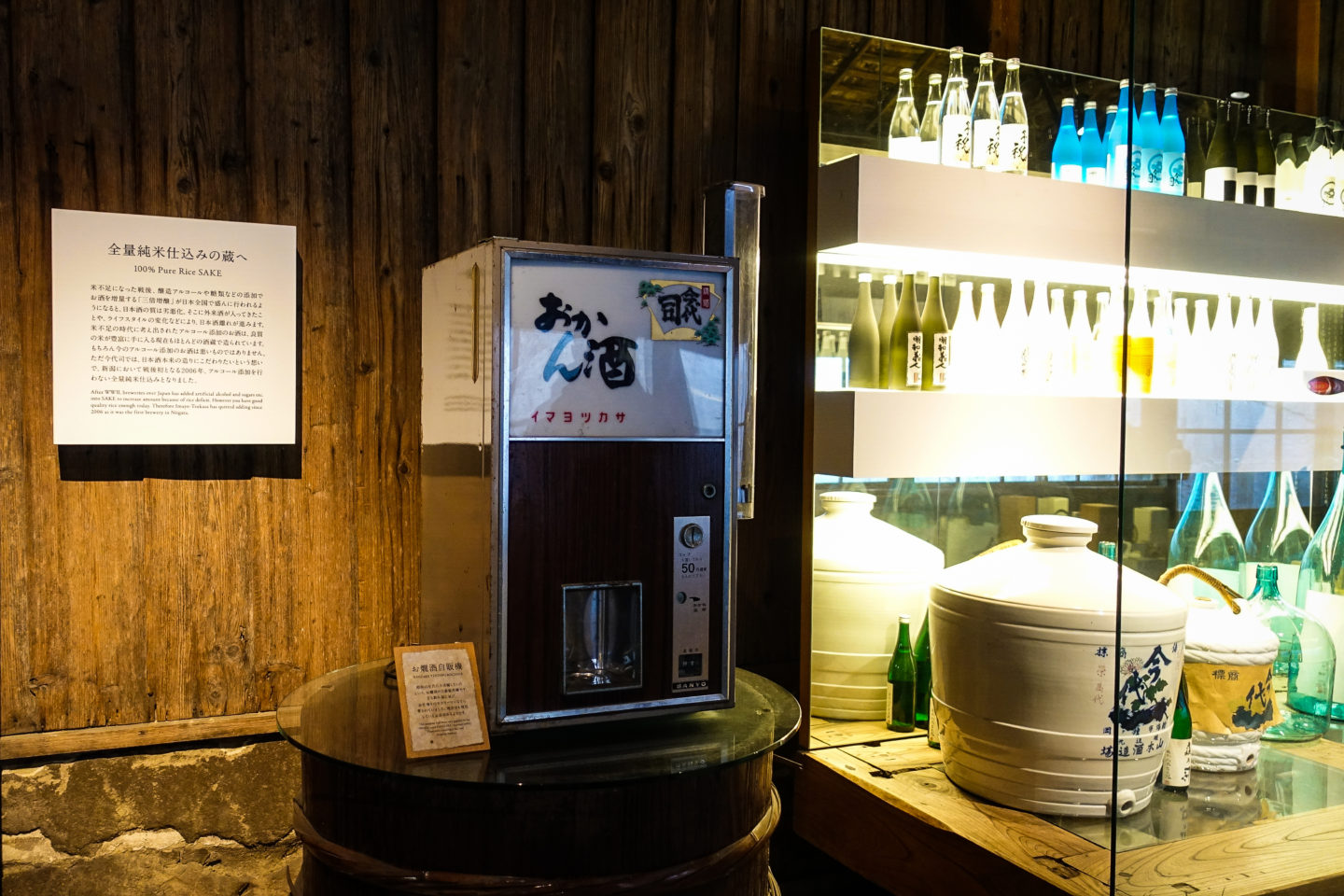
This was one of the sake vending machines. So cool! After this tour, we actually went to Ponshukan where there were 96 different types of sake to try from the vending machines (LINK).
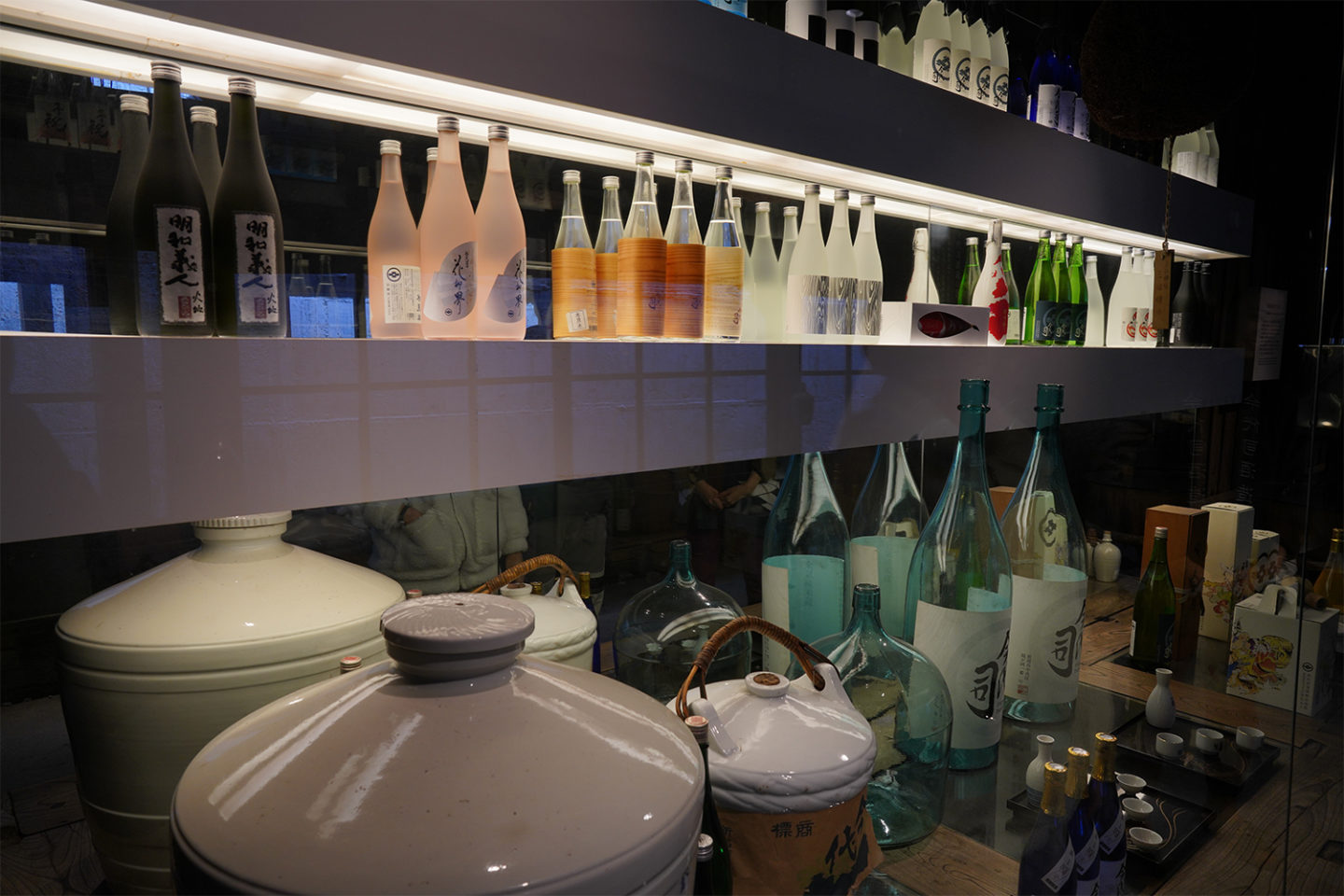
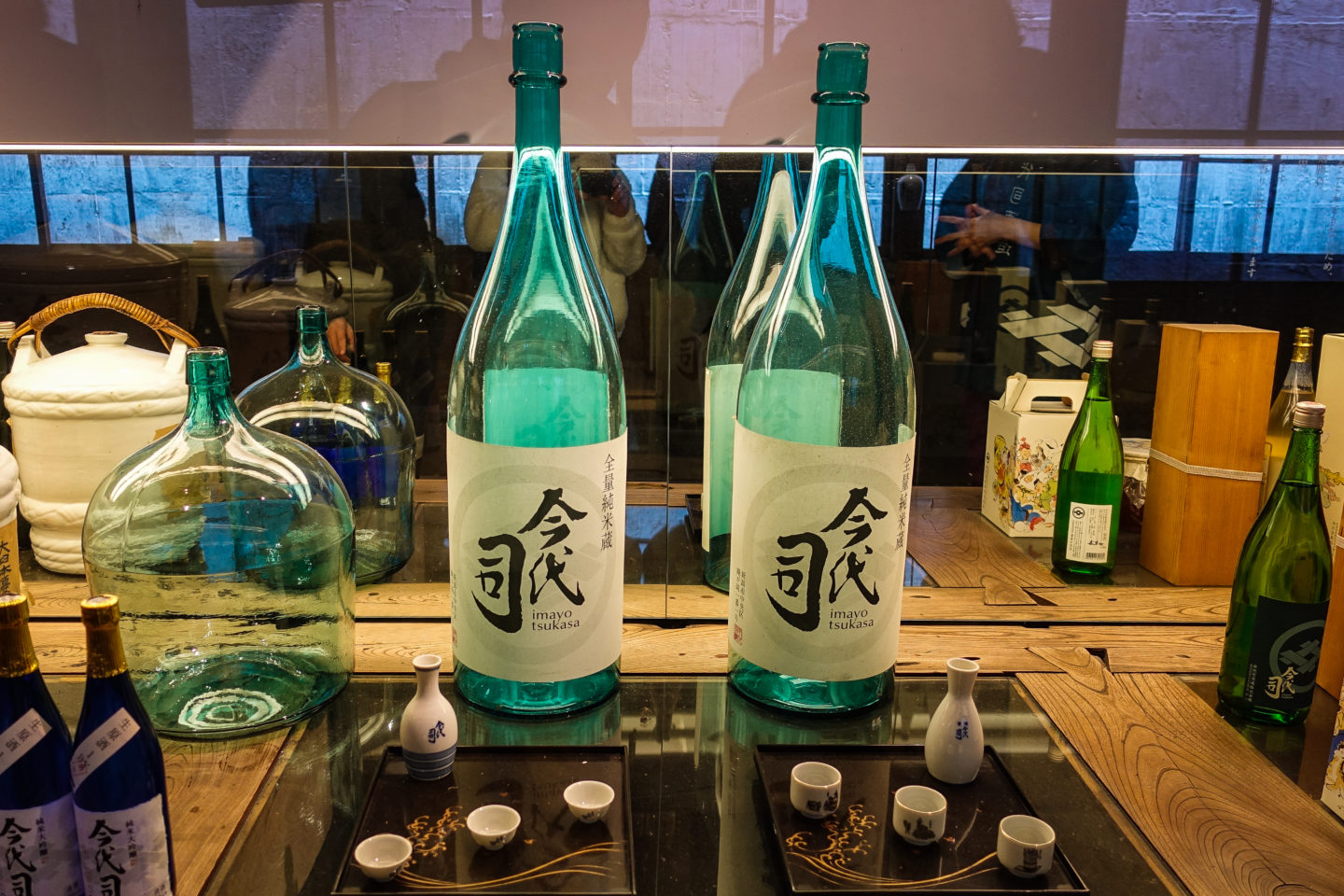
These were 18 L bottles.. Would love to bring one of these bad boys to a party 😜
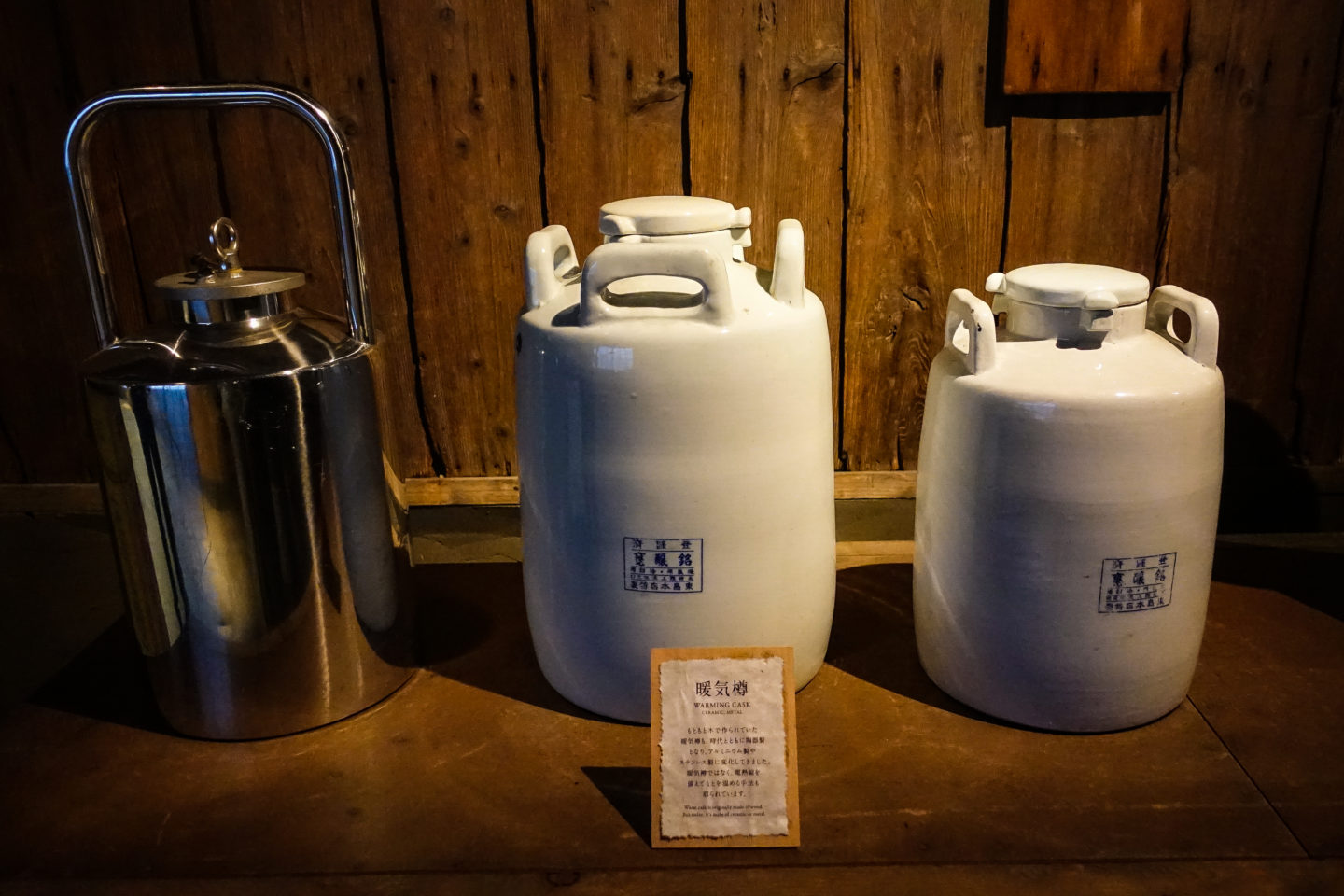
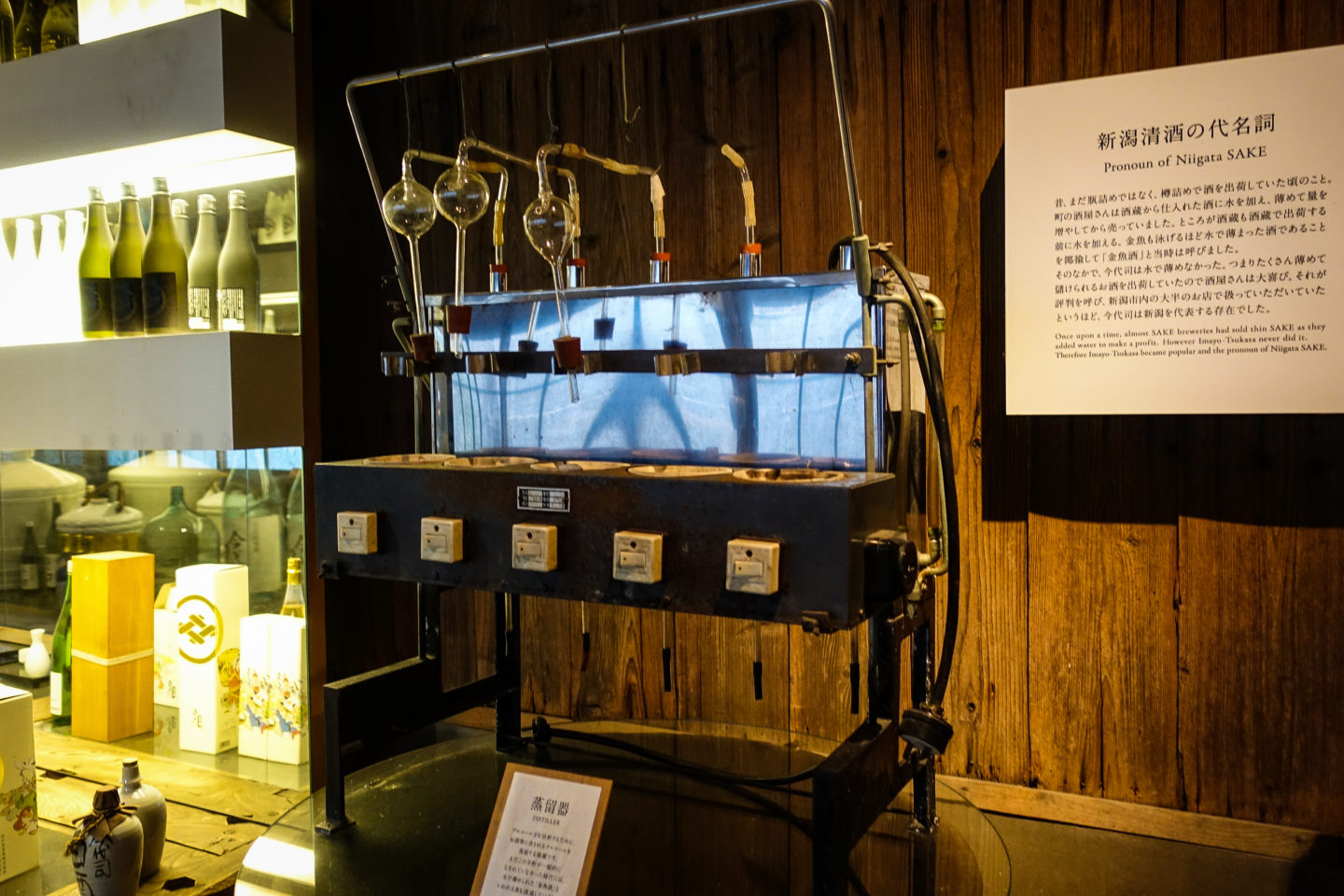
This was the old manual method of brewing sake. It looked like a chemistry set LOL Back in the days, Japanese people would put hot water in a ceramic white bottle and filter this water through the wooden device.
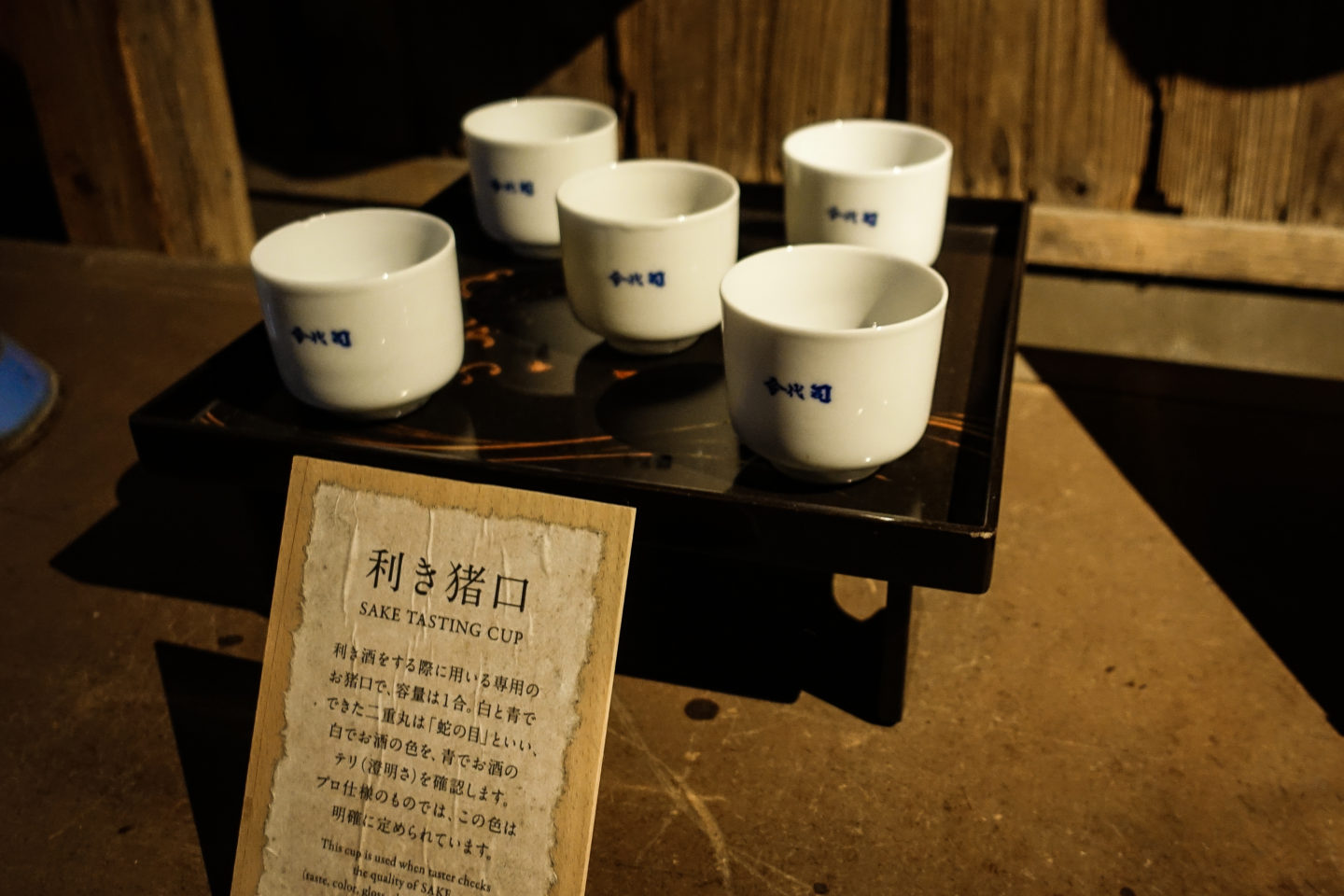
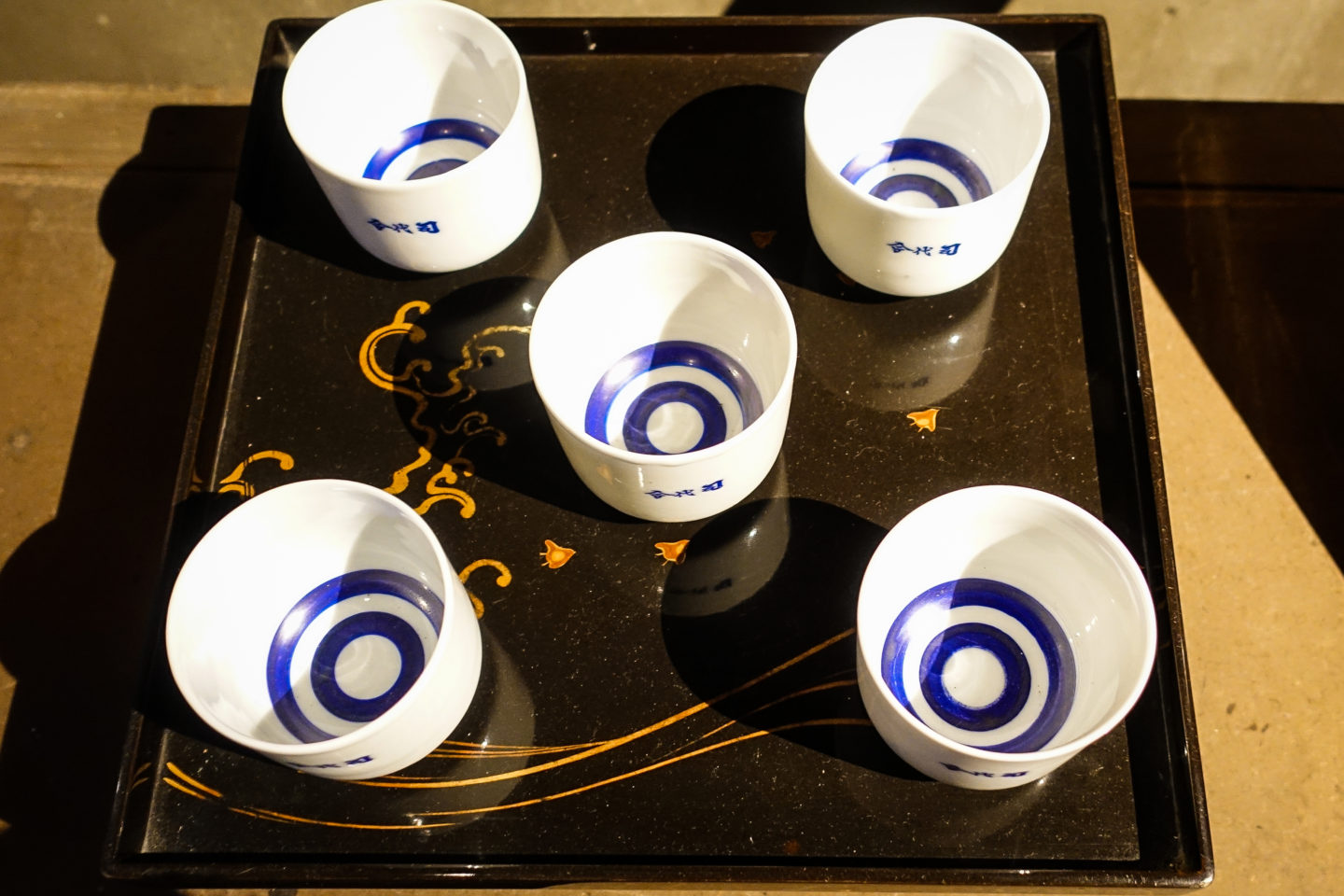
Sake is often sampled out of an ochoko (猪口) because the brewery examines the taste of the sake based on how the two circles appear in the alcohol.
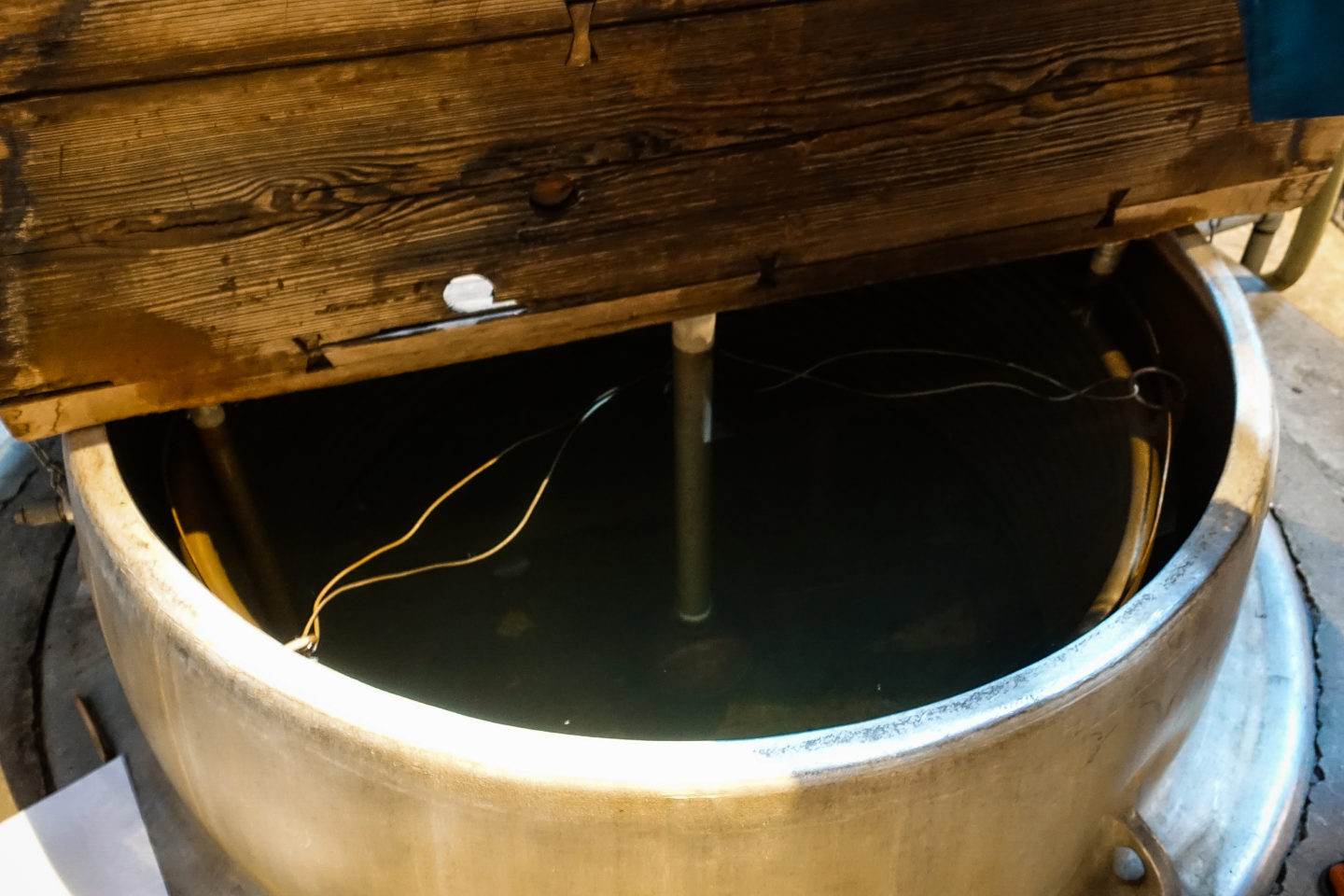
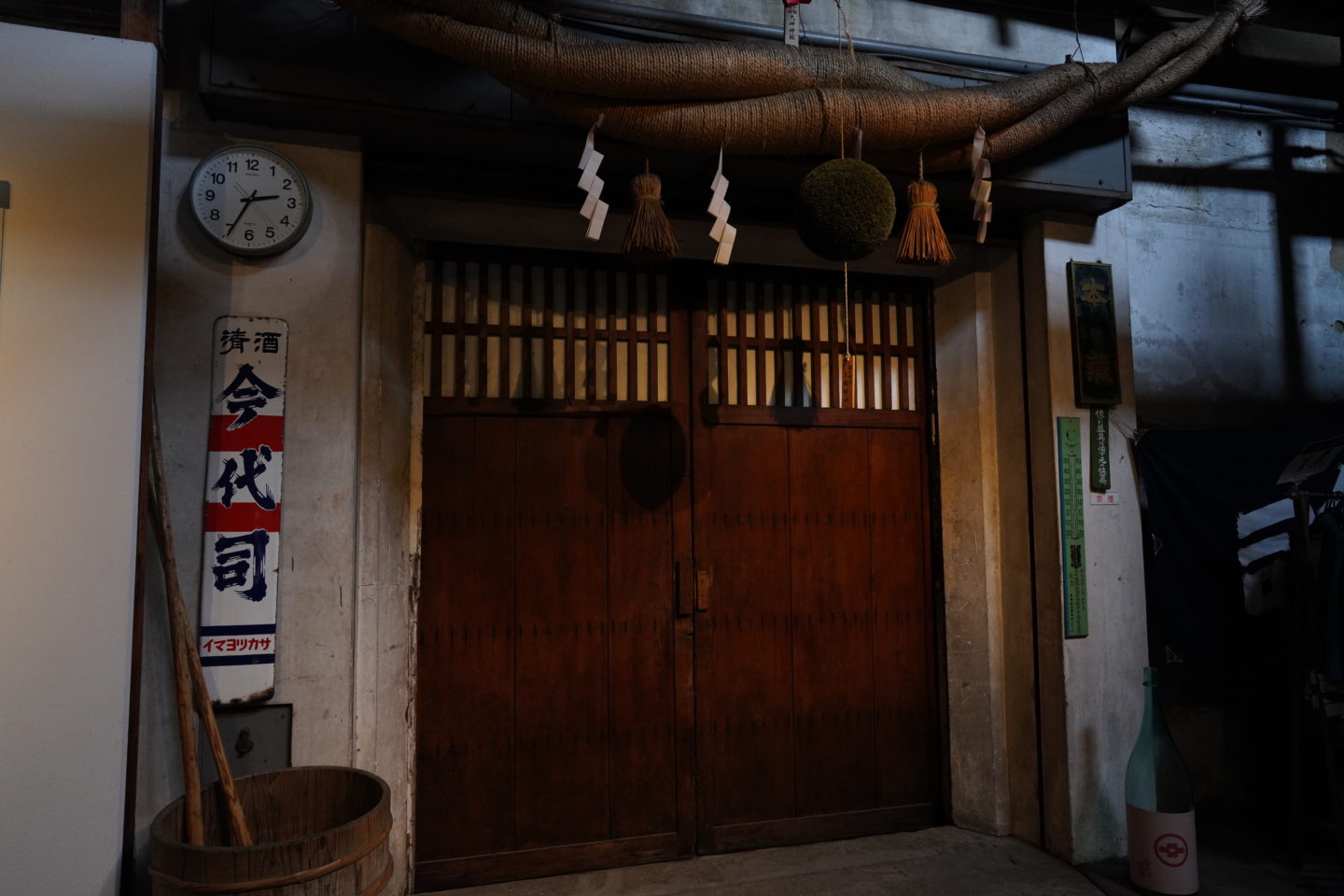
At the end of the tour, we got to wear yukatas and pose with Kai by this door. I’m not too sure which mobile phone holds that photo 🤔 but I will update this post if I ever find it.
The entire tour took a little over 30 minutes. Afterwards we went to the attached gift shop.
The entire tour took a little over 30 minutes. Afterwards we went to the attached gift shop.
Gift Shop
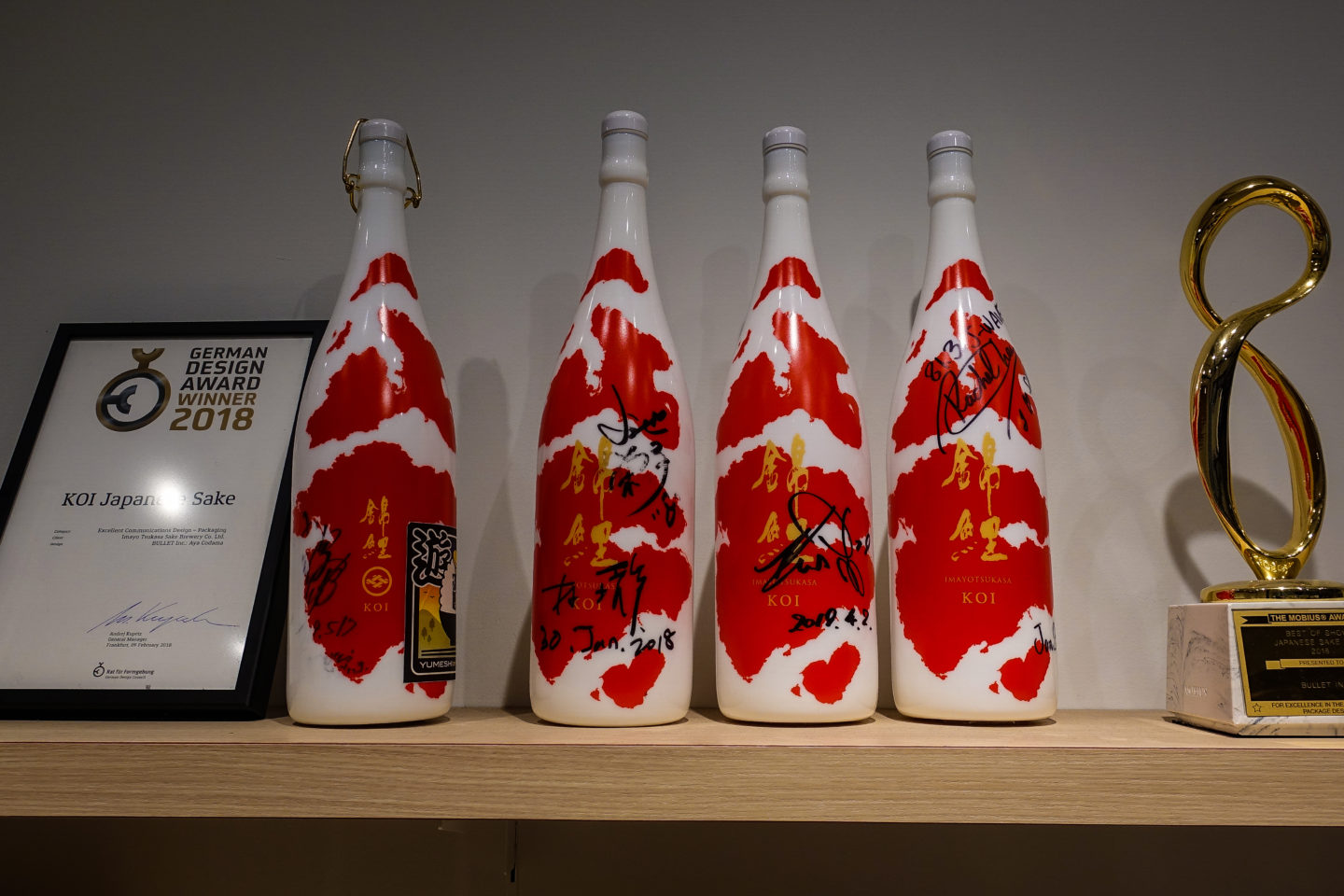
These Koi Imayo Tsukasa Shuzou bottles were gorgeous! The distinctive red-on-white pattern was crafted by Yamaharu Glass Co. and is unique to every bottle, making this a collector’s item. We brought one back to Sydney and it is now a beautiful accent in our living room 😍
The koi sake was a junmai daiginjo, with 16% alc/vol and a 50% polishing rate. It was very smooth and easy to drink, even for a non-sake lover. It had a buttery feel from the buffered mushrooms but towards the end of the sip, there was a slight spice from the cinnamon. It tasted soo good and we were kinda sad we drank it so fast after we cracked it open LOL Whoops! #alcoholics
Thank you very much for reading! We highly recommend this experience for your next Japan trip. Jaa-ne!
The koi sake was a junmai daiginjo, with 16% alc/vol and a 50% polishing rate. It was very smooth and easy to drink, even for a non-sake lover. It had a buttery feel from the buffered mushrooms but towards the end of the sip, there was a slight spice from the cinnamon. It tasted soo good and we were kinda sad we drank it so fast after we cracked it open LOL Whoops! #alcoholics
Thank you very much for reading! We highly recommend this experience for your next Japan trip. Jaa-ne!
